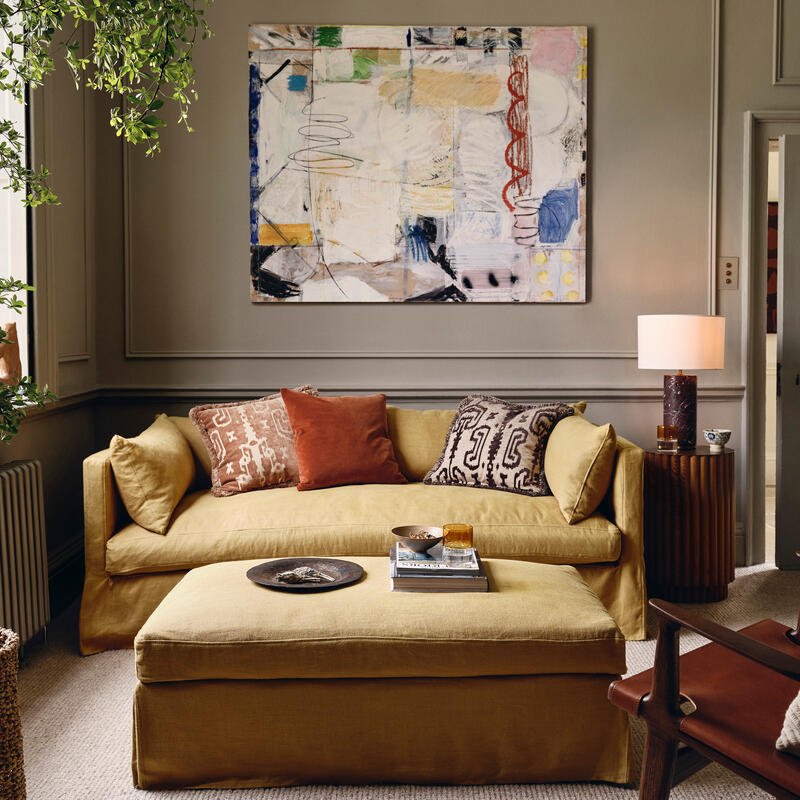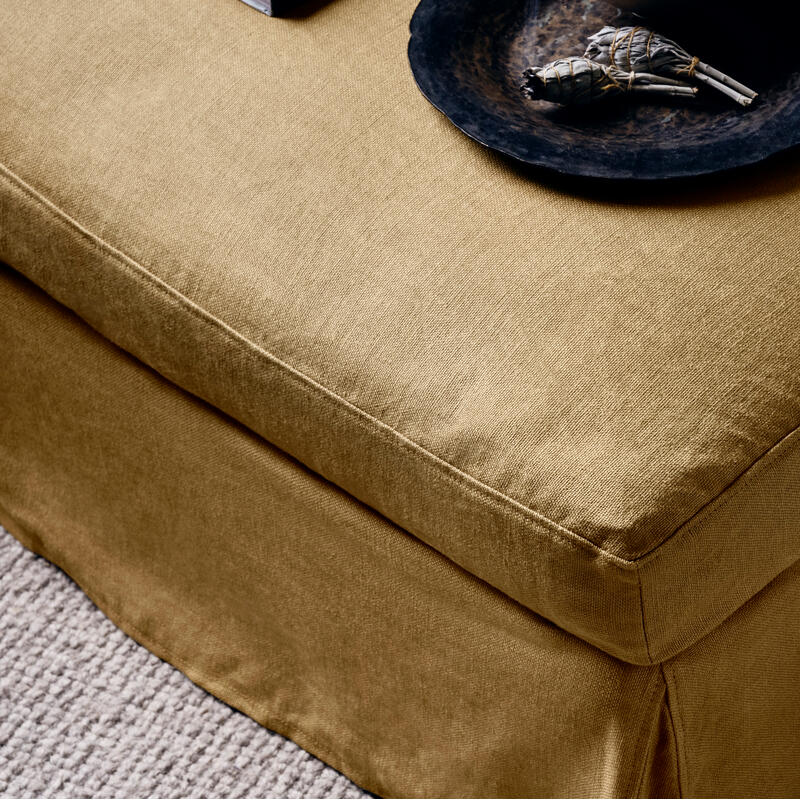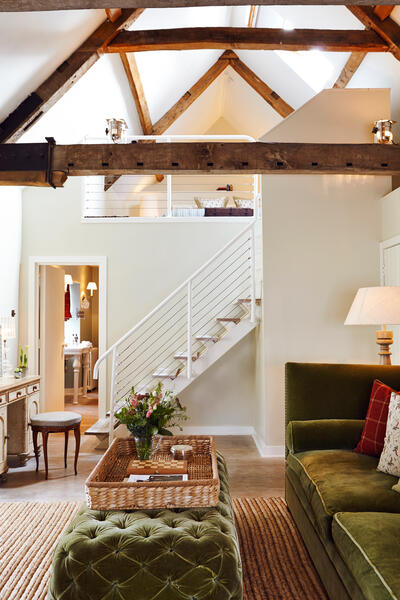From the bedrooms at Babington to the bathrooms in Istanbul, we use ottomans throughout the Houses. You'll see them at the foot of beds or accompanying dressing tables in our bedrooms, while they make a handy seat to chat to someone in the tub in our bathrooms. They also act as flexible seating in the club spaces at Soho House Chicago.
But where does this versatile piece of furniture come from? Ottomans were first introduced into Europe from Turkey (the heart of the Ottoman Empire, hence the name) in the late 18th century. Usually a padded, upholstered seat or bench without arms or a back, they were traditionally heaped with cushions and formed the main piece of seating in the home. The shape evolved from a large item of furniture ranging around three walls to a more compact corner piece, before moving into a position in the middle of a room.
During the 19th century, the ottoman became a key element in private member's clubs. Circular or octagonal, they sometimes had arms dividing the seating space into sections and a central, padded column (often with a plant or statue on top) to lean against. The seat was hinged to allow the space inside to be used as storage.


Linda Boronokay, Soho House Design DirectorWe love using ottomans in our clubs because of their versatility and also because they give a softer, more relaxed vibe to a space than a coffee table, while remaining just as practical. When made hollow with a hinged top, they are great for storage. They can also be used as footstools or pouffes when the occasion calls for it, and they can perfectly hold food and drink with the addition of a nice tray on top.



Chelsea Nelson, Soho House DesignOttomans give you the chance to put your feet up and get comfortable in a bedroom which otherwise may not have space for a sofa or chaise. They are casual and flexible, you can use them as an informal coffee with a tray on top and, depending on the upholstery detail, they can either look very decadent in a room (as at The Ned) or dressed down and casual in a cabin at Soho Farmhouse. In both scenarios they make the space feel softer and more usable, while making the most of the space in what could be a small lounge area at the end of a bed.
Welsh craftsmen make our ottomans by hand. Whether they're upholstered in durable twill or top grain leather, these hardworking pieces will fit easily into your home (while bringing a bit of classic style to the space too). Tuck one in a corner when it's not needed, then pull it out when you want to put your feet up or if you've got an extra guest for dinner and are short one chair.
Shop our selection of ottomans and footstools and pair it with an armchair or sofa.








